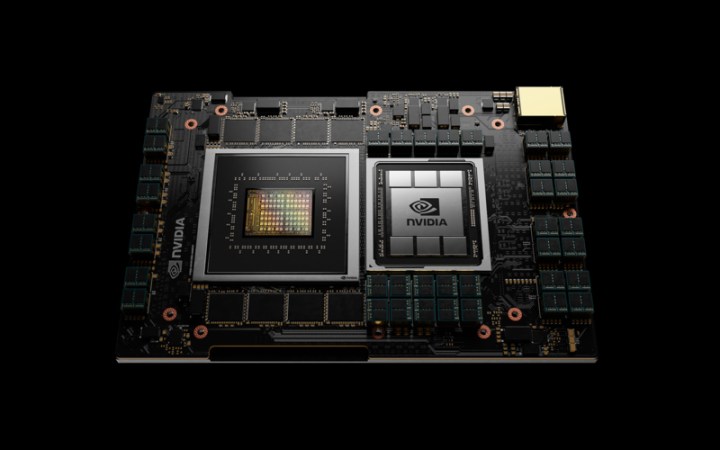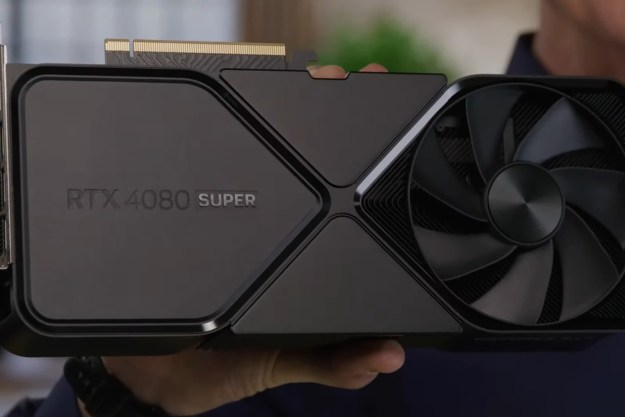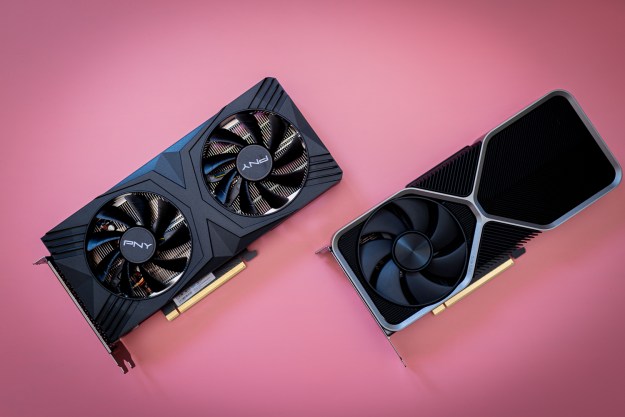Nvidia pulled back the curtain on a new supercomputer that’s set to take on some of the world’s biggest problems. It’s called Polaris, and Nvidia says it will be at Argonne National Laboratory near Chicago to tackle issues like climate change and offer insight into fields like neuroscience in 2022.
Polaris can handle complex simulations, charting, and machine learning — and that’s only part of what it can do. Nvidia says the machine is capable of 1.4 exaflops of theoretical A.I. performance and over 44 petaflops of FP64 performance. Those numbers put it within the top 10 most powerful supercomputers in the world based on the most recent TOP500 list, which tracks supercomputers around the globe.

For context, Nvidia’s recently announced DGX SuperPod is capable of around 100 petaflops of A.I. performance, and it’s designed for large companies handling complex A.I. problems. Polaris is part of the Argonne Leadership Computing Facility (ALCF), which provides computing resources to researchers. Simply put, a lot of people will be using Polaris, so it needs a lot of power.
“Harnessing the huge number of Nvidia A100 GPUs will have an immediate impact on our data-intensive and A.I. HPC workloads, allowing Polaris to tackle some of the world’s most complex scientific problems,” ALCF Director Michael E. Papka said.
At the heart of Polaris are 2,240 Nvidia A100 Tensor Core GPUs. These are the same cores that power the Grace supercomputer at Texas A&M University. The A100 core is powered by the same Ampere architecture in RTX 3000-series graphics cards, but tuned for scientific research, A.I., and data analytics.
Hewlett Packard (HP) is building the machine, and Nvidia says it will be available sometime in early 2022. It’s broken up into 560 nodes, each of which contain four A100 GPUs. In a press release, Nvidia said researchers will put these GPUs to use for things like exploring cancer treatments, finding sources of clean energy, and running complex physics simulations.
Polaris isn’t the first GPU-accelerated system Argonne has deployed. Last year, the research institute used a GPU-accelerated supercomputer to research COVID-19. In a press briefing, Nvidia said that Polaris is an extension of this type of machine, and that it helps bridge the gap to Argonne’s upcoming Aurora exascale computer.

Exascale computing is an emerging concept, noting the number of floating point operations per second (FLOPS) that a supercomputer is capable of. For exascale, the computer needs at least 1 exaflop of power, or 1 quintillion FLOPS. Aurora was originally set to be the world’s first exascale supercomputer, but it has suffered numerous delays.
Exascale was first achieved by the Folding@Home project in March 2020. Instead of a single machine, Folding@Home took advantage of volunteer computing resources to reach the exascale mark. With Aurora’s delays, the first exascale supercomputer in the U.S. is set to be Frontier, which is scheduled to go online this year.
Editors' Recommendations
- Nvidia RTX 50-series graphics cards: news, release date, price, and more
- I’ve reviewed every AMD and Nvidia GPU this generation — here’s how the two companies stack up
- What is anti-aliasing? MSAA, FXAA, TAA, and more explained
- LG’s new OLED monitor does 4K — and so much more
- I’m worried about the Nvidia RTX 4080 Super





